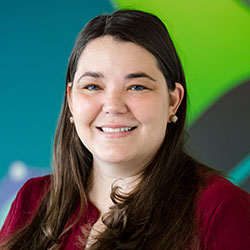
Ventricular Assist Devices (VADs)
Advanced Mechanical Support for Hearts of All Sizes
Seattle Children’s offers a wide range of ventricular assist devices (VADs), including newer options not available at every hospital, so we can provide the device that’s best for your child. A VAD can be used for children who are waiting for a heart transplant or whose heart muscle needs to rest and heal. Our VAD program is part of a comprehensive approach to caring for babies, children, teens and young adults with advanced heart failure.
What is a ventricular assist device (VAD)?
A ventricular assist device is a mechanical pump that a surgeon connects to your child’s heart and blood vessels. VAD placement usually involves open-heart surgery. The device may be implanted inside your child’s chest. Or it may be outside your child’s chest with tubes going to their heart to carry blood in and out.
What does a VAD do?
A left ventricular assist device (LVAD) helps the heart pump oxygen-rich blood to the rest of the body. A right ventricular assist device (RVAD) helps pump oxygen-poor blood to the lungs. Some children need a device that does both, called a biventricular assist device (BiVAD). Children with a single (only 1 pumping chamber) can be supported with a single ventricular assist device (SVAD).
Is a VAD the same as ECMO?
VADs and are both forms of extracorporeal life support. Like a VAD, an ECMO machine can take over the work of the heart. Unlike a VAD, ECMO also takes over the work of the lungs. With some types of VADs, like a Berlin Heart, your child will stay in the hospital. With other types, they may be able to leave the hospital. A child who is on ECMO needs to stay in the hospital.
Types of Ventricular Assist Devices We Offer

Berlin Heart
A Berlin Heart pump can support the left ventricle, right ventricle or both ventricles in a child of any size and age. It sits outside the body and connects to the heart and blood vessels with tubes. Children can use a Berlin Heart for days, weeks or even many months. Your child will need to stay in the hospital while using the Berlin Heart device. Seattle Children's was 1 of the original 10 medical centers chosen to take part in a nationwide U.S. Food and Drug Administration (FDA) study testing the Berlin device. The FDA approved this VAD in 2011.

PediMag and CentriMag centrifugal pumps
These devices are most often used on a short-term basis to support children and adolescents until doctors can place another device or the patient recovers. For certain patients, the PediMag and CentriMag may provide longer-term support until a heart transplant. These devices lie outside the body and can support the left ventricle, right ventricle or both ventricles. The PediMag is for babies and smaller children, and the CentriMag is for larger children, teens and young adults. Your child will need to stay in the hospital while using either of these devices.

HeartMate 3
This is a left ventricular assist device. It supports either the left ventricle or a patient’s single ventricle and is used in adolescents and adults. Surgeons place the HeartMate 3 inside your child’s chest. It connects to the heart and to a wire that comes out through the skin to a controller and power source. The controller and power source fit in a bag your child can wear. We typically use this type of VAD if we think a child will need long-term support or a heart transplant. After recovering from surgery, most patients can leave the hospital with the HeartMate 3.

Impella
An Impella VAD provides short-term support of the left or right ventricle. It does not require open-heart surgery. A surgeon and an work together to make a small cut (incision) and insert the device through a blood vessel in the groin or the arm. Then they guide the device into the heart. We do this hybrid heart procedure in our state-of-the-art cardiac catheterization lab. Your child will need to stay in the hospital while using the Impella.

SynCardia Total Artificial Heart (TAH)
Unlike devices that support only part of the heart, this device can do the work of both sides of the heart. It has 2 and 4 , similar to a typical natural heart. The SynCardia TAH is used as a bridge to transplant if doctors don’t expect your child’s heart to recover and your child is waiting for a donor organ. The device comes in 2 sizes. Surgeons implant the SynCardia TAH inside the chest, so your child can be mobile.
What’s special about ventricular assist devices at Seattle Children’s?
- Seattle Children's is the only pediatric heart center in the Pacific Northwest with the depth of expertise to offer every type of therapy for heart failure, including VADs.
- Our VAD program is part of a comprehensive approach to caring for babies, children and adolescents with advanced heart failure, whether due to heart disease or cardiomyopathy. We offer the full spectrum of treatment, including the most advanced medical and surgical options.
- To get the best outcomes for your child, we have a highly skilled team with special training in the needs of children on VADs. They include cardiac surgeons, , , and others with a great deal of VAD-related experience.
- Seattle Children's Cardiac Intensive Care Unit (CICU) provides the highest level of care for children who are critically ill with heart problems. Ours is the only pediatric CICU in the region.
- At Seattle Children’s, we offer many types of VADs. Our doctors have the experience to decide which device to use for your child’s unique needs. The choice depends on your child’s age, size and health.
- Some heart centers will offer only a few types of VADs for babies, children and teens. It’s important to have an array of options to choose from — and the expertise to select wisely — because each patient’s situation is different.
- When possible, we use a device that lets your child move around and even leave the hospital. This helps with rehabilitation and can get your child to a transplant (if they need it) in the safest, most effective way. The lungs and kidneys also work better when a person is able to move.
- The Heart Center team does research to understand which children will benefit from VAD support and which device can most safely support each child. This research helps us refine and improve treatment plans. Our goal is to better support patients and reduce the risk for further health problems.
- Seattle Children’s participates actively in the Advanced Cardiac Therapies Improving Outcomes Network (ACTION). This is a group of healthcare providers, researchers, parents and patients from a wide range of medical centers around the world. ACTION works to improve care for children on VADs by sharing data and outcomes, improving training and developing standard best practices.
- Our experts play an active role in defining and refining the use of VADs in children. Seattle Children's has been selected as a site for the PumpKIN (Pumps for Kids, Infants and Neonates) trial testing a new device called the Jarvik 2015 LVAD.
Hudson's Story
When muscular dystrophy caused Hudson’s heart to fail, Seattle Children’s doctors knew he needed a transplant. But they wanted him to get stronger first. So, Hudson got a left ventricular assist device.
“My hope was that we would be able to use a VAD as a bridge to get a transplant,” said Dr. Joshua Friedland-Little. The plan paid off. Hudson worked hard with an array of providers to become transplant ready before receiving his donor heart.
Meet Your Ventricular Assist Device Team
Providers involved in the VAD program include cardiac surgeons, , , pediatric surgeons, , , nurses and with advanced training.




Christina Hartje-Dunn, MD
View Profile





Bethany Lee Wisotzkey, MD
View Profile







Michael McMullan, MD
Division Chief, Congenital Cardiac Surgery; Surgical Director, Cardiac Transplant; Director, Mechanical Cardiac Support and ECLS Services
View Profile

Jennifer Jean Perfect, ARNP
View Profile

Let’s Get You Where You Need to Be

Patient Success Stories
Kaelyn's Story
Kaelyn spent more than 500 days in the hospital attached to a Berlin Heart before getting her long-awaited heart transplant. With the help and support of occupational therapy, physical therapy, speech-language therapy, Child Life and music therapy, Kaelyn learned to sit up, walk and play and caught up on other developmental milestones during her hospital stay.
“We’re glad we went with the Berlin Heart VAD. It gave our daughter a chance to live,” said Kaelyn’s mom, Christine.
Learn more about your child's treatment options
If you have a referral, please call us at 206-987-2515. For a second opinion, please fill out this form. A second opinion is a chance to confirm the features of your child's disease and get advice on the best treatment options.
Paying for Care
Learn about paying for care at Seattle Children’s, including insurance coverage, billing and financial assistance.
Contact the Heart Center at 206-987-2515 for an appointment, a second opinion or more information.